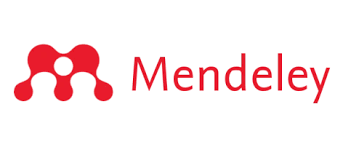Study of Policy Innovation Strategy to Accelerate Achievement of Indonesian Soybean Self-sufficiency in 2035
DOI:
https://doi.org/10.59888/ajosh.v2i6.275Keywords:
Policy Innovation, Soybean Production, Self-sufficiency StrategAbstract
The high consumption and demand for soybeans without an increase in production has forced the Indonesian government always to import soybeans. Import policy must be given special attention to suppress price increases and make the rate of MSMEs continue to grow well. It's important to formulate policy designs to accelerate the fulfilment of domestic soybean supply in Indonesia. Method research uses a qualitative method with a literature review from many literature and data sources, which is then used to make a policy-making model based on incremental theory. The results indicate that self-sufficiency in soybeans may be realized if long-term arrangements are made for several things, namely expanding the area, subsidising soybean prices, import regulations and setting fair soybean import tariffs, developing the soybean jabalsim subsystem with innovation, controlling the rate of population, and the improvisation with technology innovation. Steps to recommend policies by setting import tariffs using an open and closed system following domestic production conditions, forming small analysis teams that observe, assist and work directly on the sub-section of the soybean issue, synergy and harmony of legal products within the central government-related to excise tariffs imports according to WTO standards and rigid subsidised pricing below import prices. BULOG must regulate the trade system with digital public service innovations based on the E-Agriculture Government. In addition, the government needs to partner with the private sector to increase domestic production, provide social health insurance protection and crop insurance to soybean farmers and assist with implementing smart farming agriculture.
References
Aimon, H., & Satrianto, A. (2014). Prospek konsumsi dan impor kedelai di indonesia tahun 2015-2020. Jurnal Kajian Ekonomi, 3(05).
Aldillah, R., Harianto, H., & Daryanto, H. K. S. (2014). Analisis Simulasi Kebijakan untuk Meningkatkan Produksi Kedelai Nasional. Jurnal Agribisnis Indonesia (Journal of Indonesian Agribusiness), 2(1), 33–62.
Fathorrazi, M., & Adam Ridjal, J. (2015). Alternatif Model Kebijakan Peningkatan Daya Saing Kedelai Lokal Dalam Rangka Mencapai Kedaulatan Pangan Nasional.
Firdaus, M., Wahyudi, F., Sauqi, A., & Widaninggar, N. (2018). Feasibility and Sensitivity Study of Big Chilli Farm Business in Jember Regency. Nusantara Science and Technology Proceedings, 419–424.
Gebhardt, S., Lemar, L., Haytowitz, D., Pehrsson, P., Nickle, M., Showell, B., Thomas, R., Exler, J., & Holden, J. (2006). USDA National Nutrient Database for standard reference, release 21. United States Department of AgricultureAgricultural Research Service.
Hulu, A. (2023). Studi Inovasi Strategi Kebijakan Percepatan Pencapaian Swasembada Kedelai Indonesia Tahun 2035. Matra Pembaruan: Jurnal Inovasi Kebijakan, 7(1), 13–23. https://doi.org/10.21787/mp.7.1.2023.13-23
Ibnu, S., Mukhadis, A., & Dasna, I. W. (2003). Dasar-dasar metodologi Penelitian. Malang: Universitas Negeri Malang.
Lindblom, C. E. (1979). It is still muddling, not yet through. Public Administration Review, 39(6), 517–526. https://doi.org/10.21787/mp.7.1.2023.13-23
Mahdi, N. N., & Suharno, S. (2019). Analisis Faktor-Faktor Yang Memengaruhi Impor Kedelai di Indonesia. Forum Agribisnis: Agribusiness Forum, 9(2), 160–184.
Maulana, H. F., Mayunita, S., Hastuti, H., & Wijaya, A. A. M. (2018). Diskurusus Kebijakan Publik Model Incremental. Kybernan: Jurnal Studi Kepemerintahan, 1(2), 1–13.
Nainggolan, K., & Rachmat, M. (2014). Prospek Swasembada Kedelai Indonesia Selfsufficiency Prospect of Soybean in Indonesia. Jurnal Pangan, 23(1), 83–92.
Rachmanti, A., Riyadi, R., & Suharmanto, S. (2016). Pengaruh Inflasi Dan Nilai Tukar Rupiah Terhadap Impor Kedelai Di Jawa Tengah (Periode 2001-2013). JOBS (Jurnal Of Business Studies), 1(2).
Rachmat, A. N. (2014). Tantangan dan Peluang Perkembangan Teknologi Pertahanan Global Bagi Pembangunan Kekuatan Pertahanan Indonesia. Transformasi Global, 1(2).
Rahmania, A. (2014). Pengaruh Kebijakan Tarif Impor Kedelai terhadap Volume Impor Kedelai di Indonesia. Universitas Brawijaya.
Sayaka, B., Swastika, D. K. S., & Saputra, Y. H. (2021). Challenges of soybean self-sufficiency policy in Indonesia. IOP Conference Series: Earth and Environmental Science, 648(1), 12035. https://doi.org/10.1088/1755-1315/648/1/012035
Sitaresmi, C. (2015). Komoditas kedelai dalam hegemoni ekonomi neoliberalisme (studi kasus tata produksi dan tata niaga kedelai di kabupaten grobogan, jawa tengah). Politika: Jurnal Ilmu Politik, 6(1), 1–13.
Published
Issue
Section
License
Copyright (c) 2024 Artinus Hulu, Amy Yayuk Sri Rahayu

This work is licensed under a Creative Commons Attribution-ShareAlike 4.0 International License.
Authors who publish with this journal agree to the following terms:
- Authors retain copyright and grant the journal right of first publication with the work simultaneously licensed under a Creative Commons Attribution-ShareAlike 4.0 International. that allows others to share the work with an acknowledgement of the work's authorship and initial publication in this journal.
- Authors are able to enter into separate, additional contractual arrangements for the non-exclusive distribution of the journal's published version of the work (e.g., post it to an institutional repository or publish it in a book), with an acknowledgement of its initial publication in this journal.
- Authors are permitted and encouraged to post their work online (e.g., in institutional repositories or on their website) prior to and during the submission process, as it can lead to productive exchanges, as well as earlier and greater citation of published work.










